Main features: crunchy crust, very open crumb
Type of dough: high hydration, very wet dough
Flours: white wheat flour, strong flours (this recipe also uses kamut for extra flavor)
Key pointers for a correct execution:
- Folding the dough during bulk ferment (S&F, lamination, coil folds)
- Long cold fermentation for deep flavor
- High temperature baking, powerful steam injection during the first few minutes of baking
Pairing: olive oil & balsamic, ideal for sandwiches.
Ciabatta is a loaf that originates in sunny Italy and, contrary to popular belief, it is a relatively recent bread. It originated in Veron,a in 1982 and was first made by a baker in response to the popularity of the French baguette. The perfect ciabatta has a crunchy crust and a soft very open crumb. We’ll say it again, very very open crumb – a dense or puffy crumb is a sign the ciabatta is not executed correctly.
It is usually made with an yeast-based preferment named biga, but that doesn’t mean you can’t make a crazy good ciabatta using only sourdough.
You should expect this dough to be harder to work than a regular loaf, as it is quite a high hydration dough (over 85% hydration, but you can take it as up as 120% if you’re feeling brave). It is a very simple bread, but if done correctly, it can be quite spectacular. Who hasn’t had a piece of ciabatta with some good Italian olive oil and a touch of balsamic? Ok, enough chit chat, let’s get to workin’.
Alrighty, let’s get to it.
Ingredients
| Ingredient | Grams | Baker’s percentage |
| White wheat flour (we used Molino rachello tipo 0) | 400 | 39% |
| Strong bread flour (we used Molino Denti’s manitoba) | 460 | 30% |
| White kamut flour (Molino Rachello) | 150 | 14% |
| Water | 880 | 87% |
| Extravirgin olive oil | 35 | 3.5% |
| Salt | 23 | 2.3% |
| Starter at 100% hydration | 350 | 35% |
Notice the sourdough inolculation we use is considerably higher than our regular 20% inoculation (inoculation is a fancy word for starter/ flour amount) and yes, that is on purpose, in order to support the kind of rise you want for this loaf. For this recipe we chose a combination of regular bread flour, strong bread flour (manitoba) and kamut, which is our go-to flour whenever we want to improve the flavor profile of any bread.
Method
- Kneading
- You will really wish you had a good mixer for this type of dough. Of course, you can also knead by hand
- Add the flours, sourdough starter and gradually add in water. Only add more water when it has been absorbed completely. Do not, we repeat, do not add the entire amount of water in one go.
- Once all the water has been absorbed and the dough comes off the wall of your mixer bowl, add the salt and mix it for another 30 – 45 seconds.
- Then add the olive oil and mix for another minute.
- Bulk ferment
- Transfer your dough in a lightly oiled container (to prevent the dough from sticking). Ferment at at room temperature for about one hour, during which apply the following procedures:
- Stretch & Fold when you transfer the dough to your container
- Laminate it after 30 minutes
- One coil foild after another 30 minutes
- Place your dough in the refrigerator and let it ferment for a further 10-12 hours.
- Transfer your dough in a lightly oiled container (to prevent the dough from sticking). Ferment at at room temperature for about one hour, during which apply the following procedures:
- Shaping
- Remove your dough from the refrigerator and flour your working surface with semolina flour (you want to apply plenty of flour to your surface, otherwise your dough will stick)
- Turn your container upside down and place the dough on your working surface.
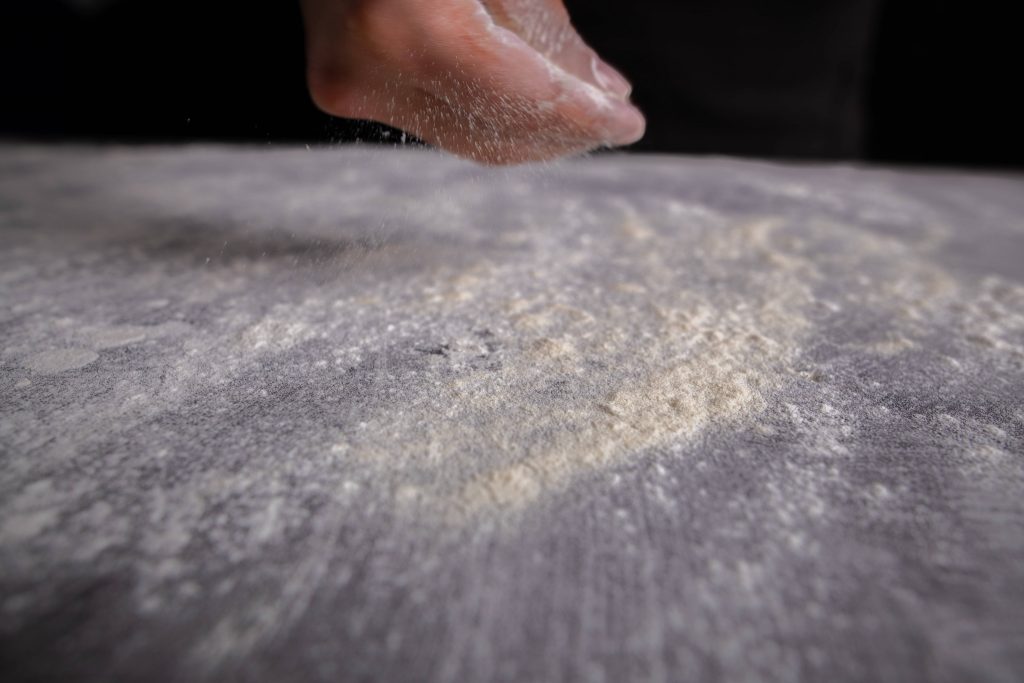
Delicately stretch your dough using your fingers until it is about 2-3 cm thick and shaped like a rectangle.
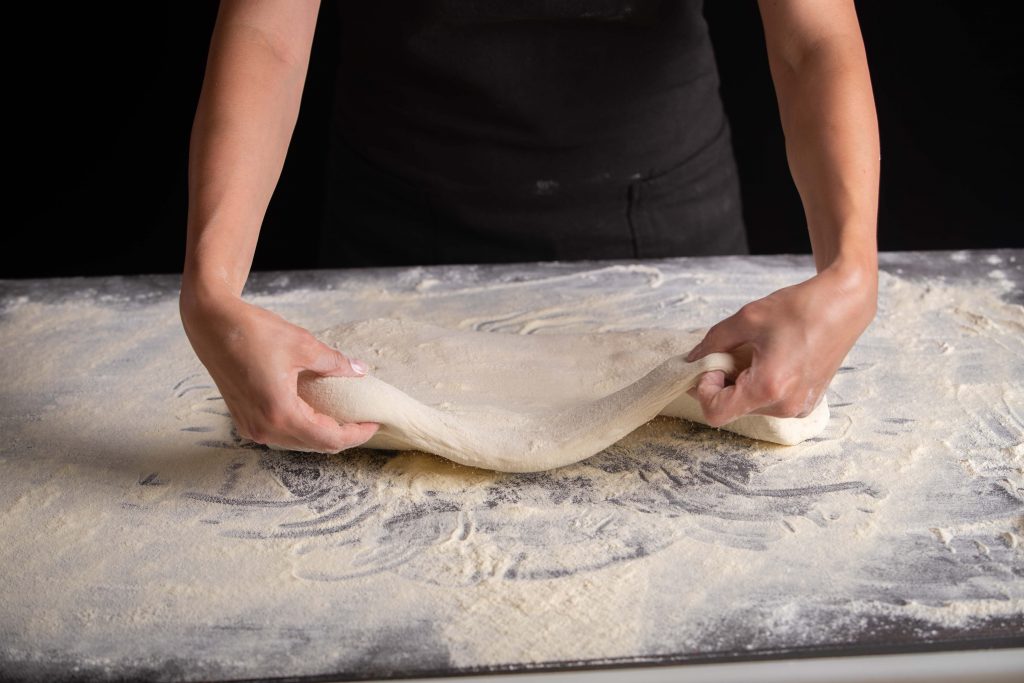

Using a dough cutter, cut your ciabattas in 10-12 cm wide logs. Also add semolina flour on the freshlu cut edges, to prevent them from sticking to your couche.
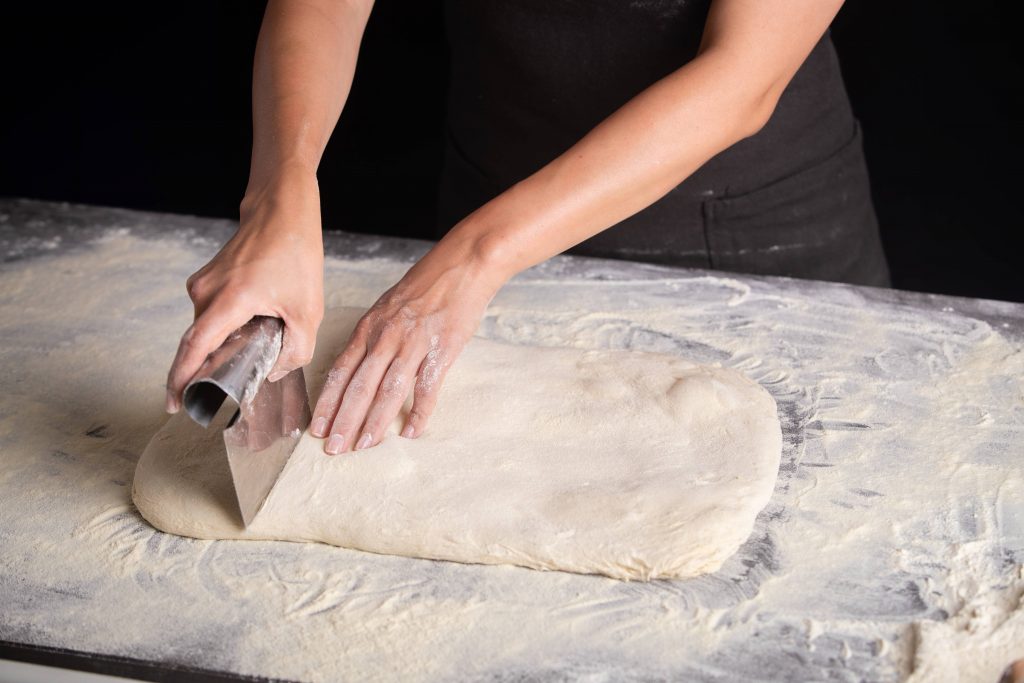
Transfer your ciabatta onto a well floured couche. Lift the couche on the edges of your ciabattas.
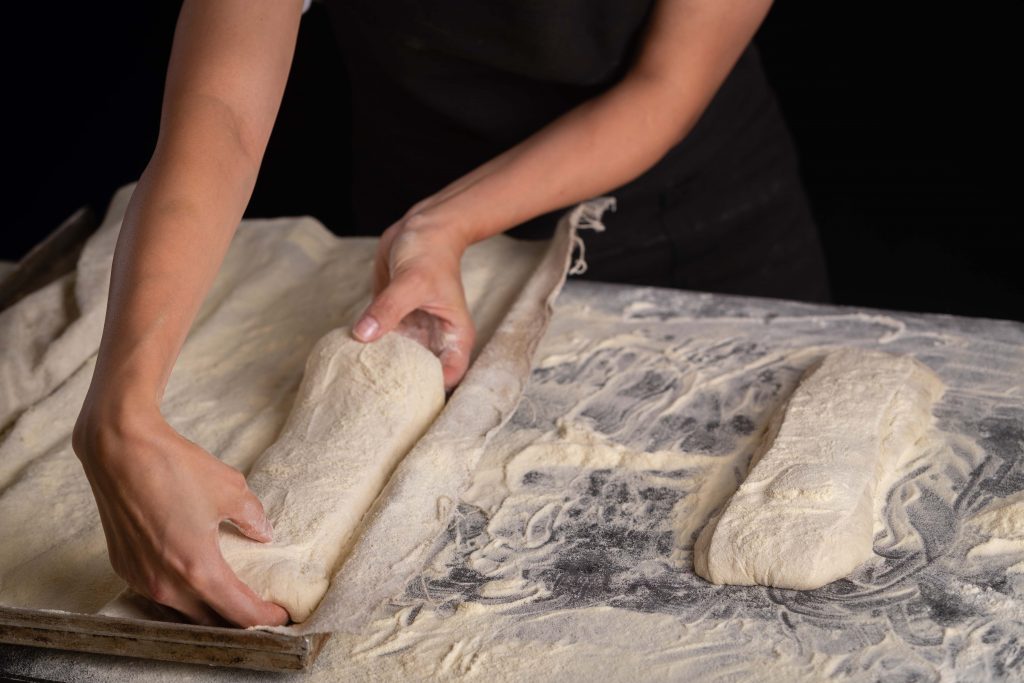

Final proofing. Cover your ciabattas and leave them to proof until they pass the poke test. It took about 90 minutes in our case, but times may vary depending on the conditions in your kitchen.
Baking – using a pizza peel (also cover the pizza peel with some semolina flour), transfer your dough onto a well heated oven. Bake:
- 230 degrees Celsius, with steam, for 5 minutes
- Remove your steam source and bake for a further 5-10 minutes at 200 degrees Celsius, until the crust is lightly brown.
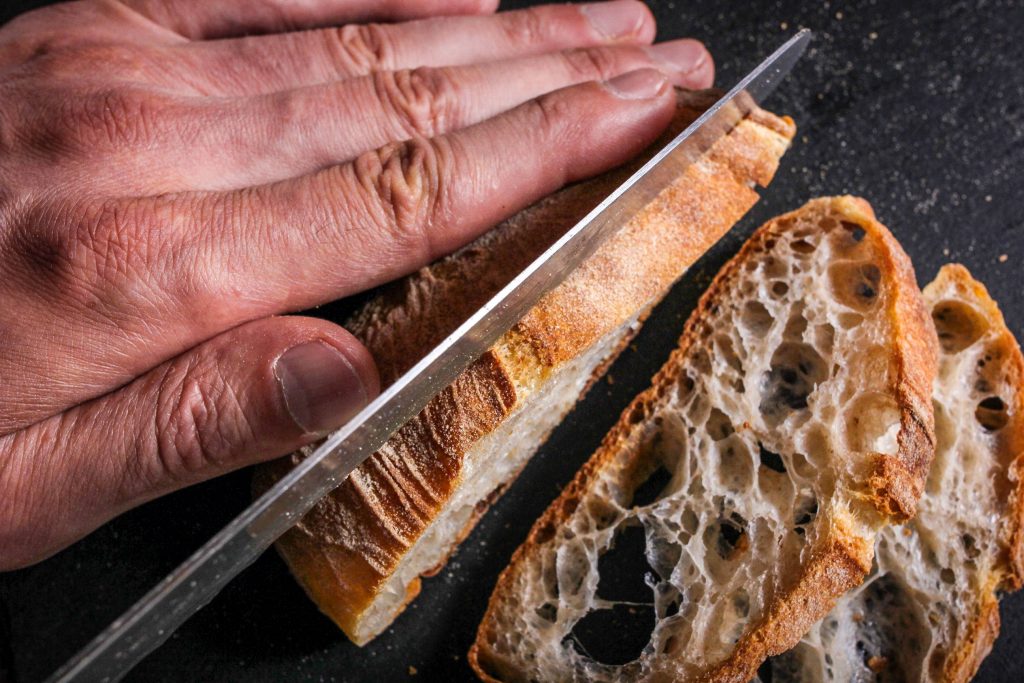
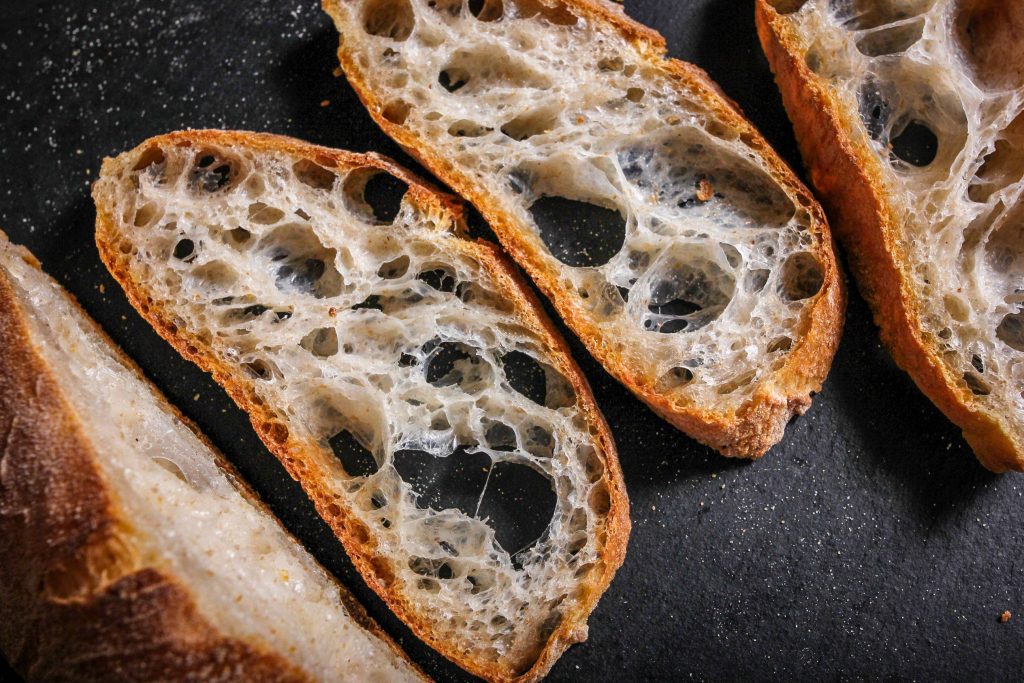
Don’t cut your ciabattas until they are completely cool. If you cannot wait (and we can’t blame you) tear a piece and enjoy it while it’s still warm.
Enjoy it with your favorite dish or simply with some olive oil and a touch of balsamic. Once you get to the point where you feel confident working this type of wet dough, you can slightly start to increase hydration – we have reached somewhere around 110-120% hydration and the higher the hydration, the better the structure and taste.
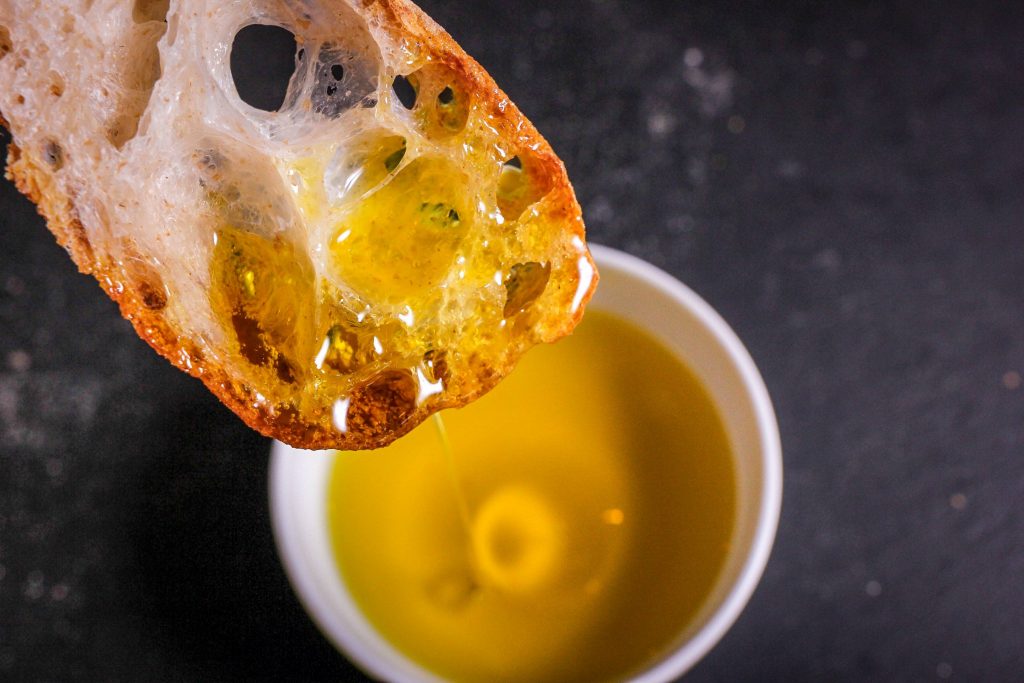
Keep baking the world a better place!
